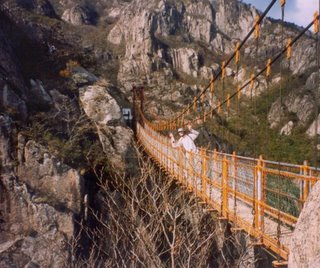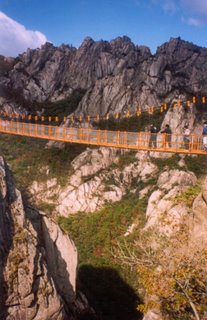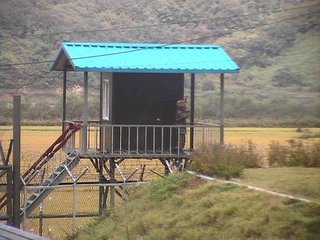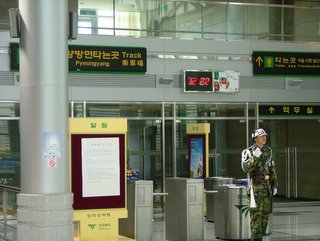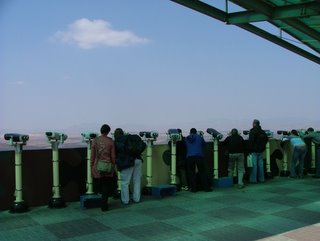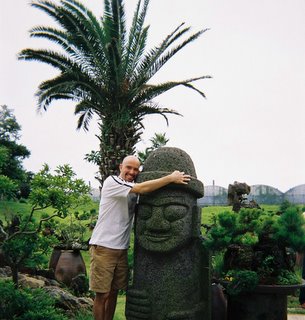 I'm not sure how many times this dolharubang (stone grandfather) has been hugged, but he still seems to enjoy the attention. There were 45 original harubang found on the island by the first settlers. There are many theories as to what purpose they served, but history can't place them. I was informed if you rub its nose you'll get pregnant. I opted against such an action, only because I don't think I'd carry the weight well.
I'm not sure how many times this dolharubang (stone grandfather) has been hugged, but he still seems to enjoy the attention. There were 45 original harubang found on the island by the first settlers. There are many theories as to what purpose they served, but history can't place them. I was informed if you rub its nose you'll get pregnant. I opted against such an action, only because I don't think I'd carry the weight well. 
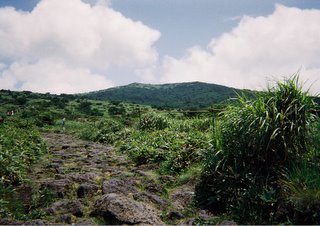 I chose to hike Hallasan which is the highest mountain in S. Korea. Pretty crazy when you consider this mountain is based on a small island. A portion of the hike consisted of volcanic rock.
I chose to hike Hallasan which is the highest mountain in S. Korea. Pretty crazy when you consider this mountain is based on a small island. A portion of the hike consisted of volcanic rock.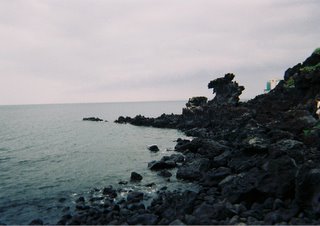 Yongduam Rock, which is known for its resemblance of a dragon's head. This structure was created from a volcanic lava flow about 2 million years ago.
Yongduam Rock, which is known for its resemblance of a dragon's head. This structure was created from a volcanic lava flow about 2 million years ago.
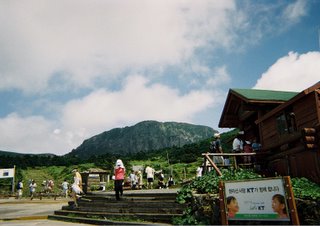 Hallasan Mountain! The highest peak in S. Korea!
Hallasan Mountain! The highest peak in S. Korea!
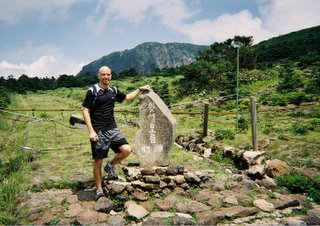 Despite the forced grin, I was very dissapointed I was unable to climb to the peak of Hallasan. It may have been closed for revegetation, but truthfully I'm not sure.
Despite the forced grin, I was very dissapointed I was unable to climb to the peak of Hallasan. It may have been closed for revegetation, but truthfully I'm not sure.  The boat guide drove us tourists out to this deserted island off the southern coast of Jeju-do. Look at the size of this cave on Beomseom Island. It's easiest if you compare it to the human on the far right side of the picture. Our boat steered into it for a quick close up view.
The boat guide drove us tourists out to this deserted island off the southern coast of Jeju-do. Look at the size of this cave on Beomseom Island. It's easiest if you compare it to the human on the far right side of the picture. Our boat steered into it for a quick close up view.
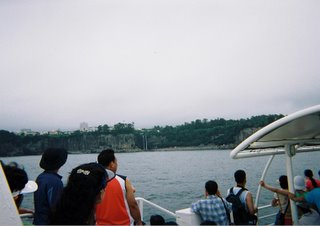 Jeonbang Waterfall, in the distance, claims to be the only seaside waterfall in Asia. Sorry, no zoom lens on these disposable cameras.
Jeonbang Waterfall, in the distance, claims to be the only seaside waterfall in Asia. Sorry, no zoom lens on these disposable cameras.  Different caves on Beomseom Island. Once again, capare the size of these caves to the person on the right.
Different caves on Beomseom Island. Once again, capare the size of these caves to the person on the right. 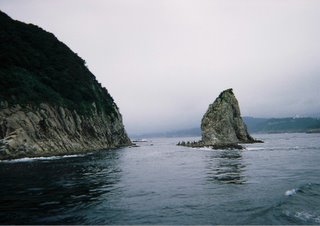 If you enlarge this picture, you can view some of the people on this tiny islet. So, you may have wondered what all these people are doing on this "deserted island"? The island of Beomseom was covered with people fishing all day. I can take a guess, but I'm still not exactly sure how so many people make it out to this island. There was not one boat parked around the whole island for transport.
If you enlarge this picture, you can view some of the people on this tiny islet. So, you may have wondered what all these people are doing on this "deserted island"? The island of Beomseom was covered with people fishing all day. I can take a guess, but I'm still not exactly sure how so many people make it out to this island. There was not one boat parked around the whole island for transport.
I now stand corrected from the comment above. The people you see in this picture are out scuba diving. The boat drops them off & they'll radio back in when the group is ready to be picked up. Thanks for informing me Allison! Guess I should have noticed their wetsuits in this photo. Oops...
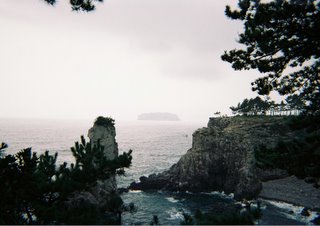 Behind the tree branches is a free free standing rock named Oedolgae. In the far distance is Beomseom Island.
Behind the tree branches is a free free standing rock named Oedolgae. In the far distance is Beomseom Island. Please view Jeju-do for more pictures.
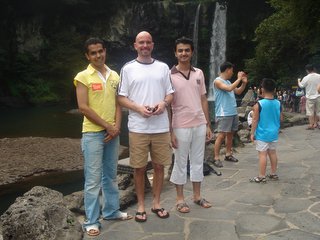
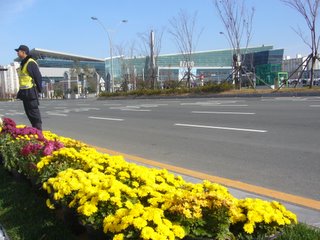
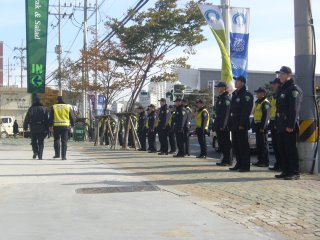

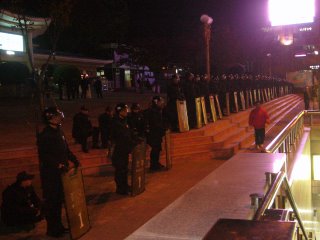



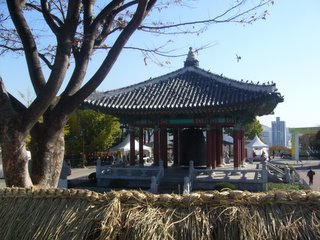
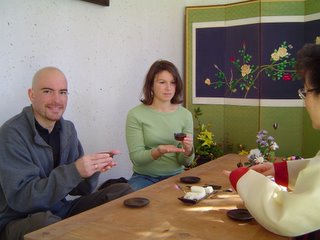
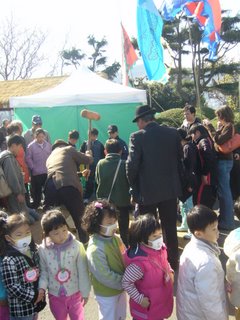

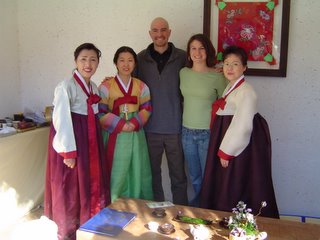
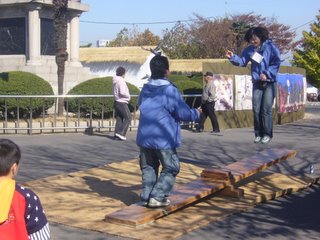
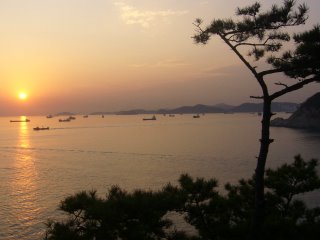
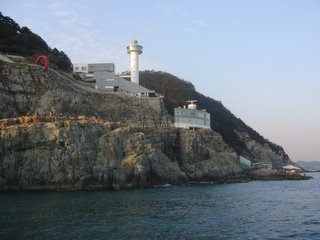


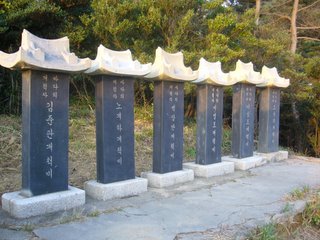
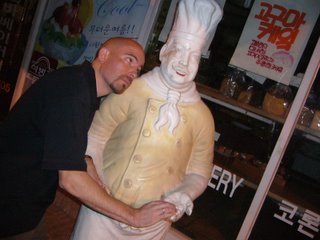
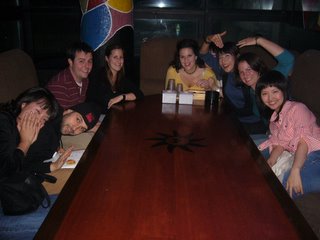

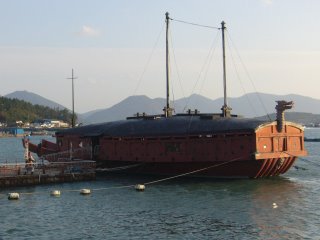
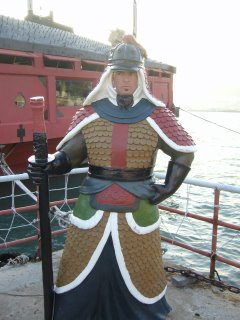

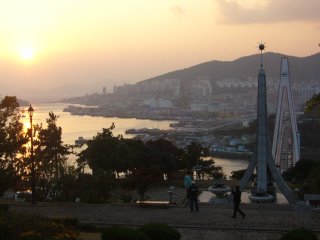

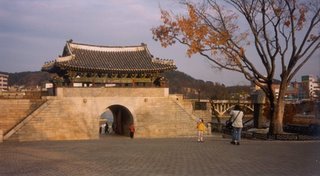
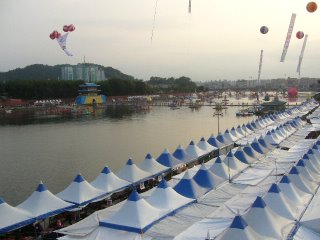
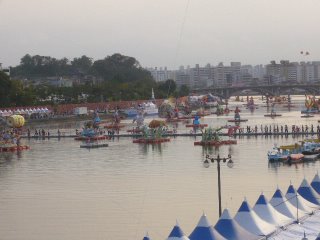



 While Wolchulsan National Park is the smallest park in S. Korea, it quickly rises above the fields below. It took about 8 hours to hike from one end to the other.
While Wolchulsan National Park is the smallest park in S. Korea, it quickly rises above the fields below. It took about 8 hours to hike from one end to the other. 